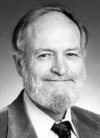Team Members
 Carl McIlwain
Carl McIlwainCarl E. McIlwain received his Ph.D. from the University of Iowa in 1960. He was a member of the University of Iowa faculty as an assistant professor until 1962 when he joined the faculty at UCSD /La Jolla. He became a full professor at UCSD in 1966. His space-physics group at UCSD has designed and developed equipment for performing experiments in flight aboard several spacecraft, including satellites in the EXPLORER, RELAY and ATS series. The group developed an instrument for detecting radiation trapped in Jupiter's radiation belts and Saturn's radiation belts; the instrument was flown aboard PIONEER 10 and 11 in 1972 and 1973. In 1970 Dr. McIlwain received the "Space Science Award" from the American Institute of Aeronautics and Astronautics "for originating a system of coordinates which is of great utility for mapping the radiations trapped in the earth's geomagnetic field and for outstanding investigations of these radiations." In 1975 he received the J .A. Fleming Medal of the American Geophysical Union for "Original Research and Technical Leadership in Geomagnetism, Atmospheric Electricity, Aeronomy and Related Sciences." He became interested in adapting techniques of space experiments to astronomical problems and with Edward Beaver invented a multichannel digital photometer (Digicon), which was first used successfully in 1971 to obtain measurements of absorption lines in the spectra of a quasistellar object. Two descendants of the instrument became integral parts of NASA's Hubble Space Telescope mission. Dr. McIlwain has been awarded two Guggenheim awards and the Humboldt Senior Scientist Award. In 2000 Dr. McIlwain received the Hannes Alfven Medal of the European Geophysical Society.
Published Work
Awaiting bio of Dr. Stephen Kerr.